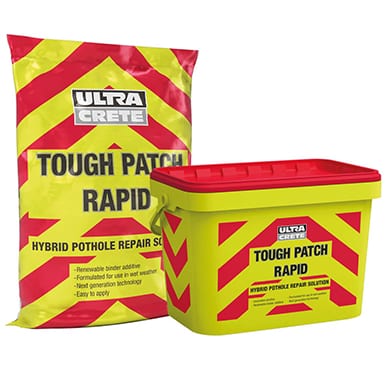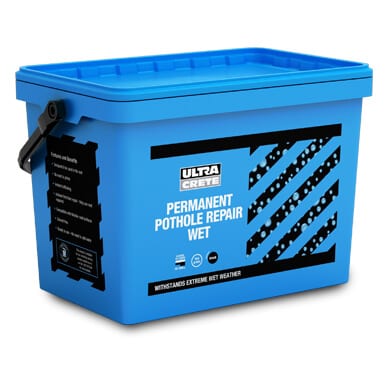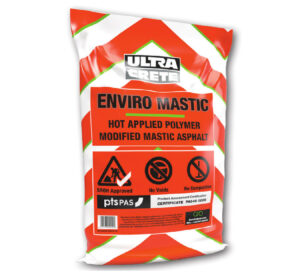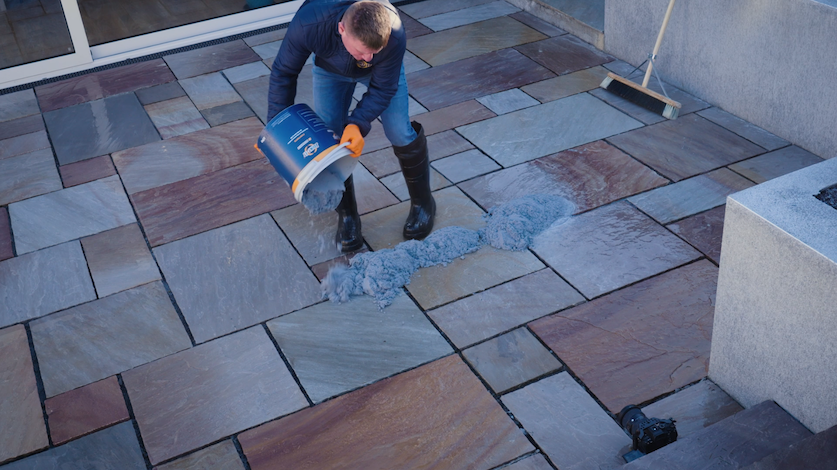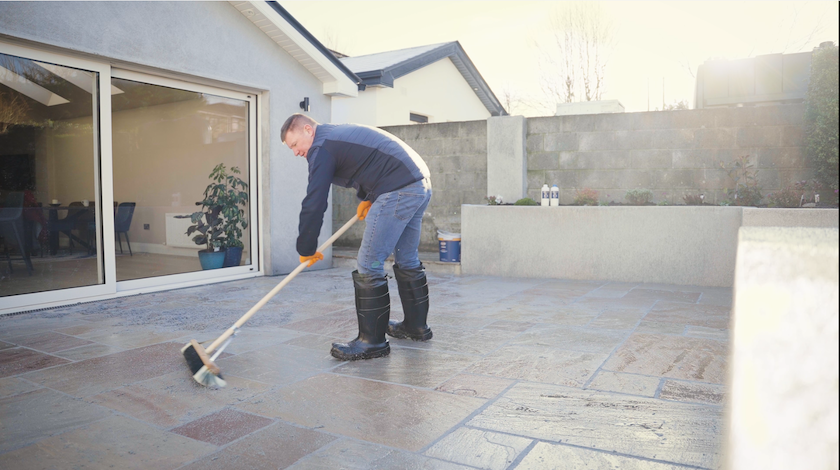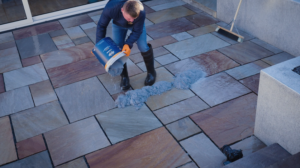During winter, a combination of rain and frost can create havoc for Britain’s roads in the form of potholes. But can you fix potholes during wintertime? Read our guide to repairing potholes during cold weather to find out how to store and handle tarmac mix, the minimum temperatures for patching reinstatements and whether cold-lay asphalt mixes can really be used in all weathers.
Impact of cold weather on Britain’s roads
Potholes are created when water seeps into cracks within the tarmac road surfaces. When that water freezes, as it does every icy morning across the UK, the frozen water expands and creates even larger crevasses.
The weight of regular car traffic, and certainly heavier vehicles like trucks, causes those cracks to grow and create potholes.
Potholes generally expand overtime when more traffic runs over them.
Can you fix potholes during winter?
So if potholes are often the result of frosty weather, should they be fixed during the same cold weather spells?
Instarmac is one of the UK’s largest manufacturers of ready-mixed asphalt materials and its team is deeply experienced when it comes to the ins and outs of repairing potholes. Instarmac’s Dave Youell explains, “In best practice, the ground must be frost-free for patching potholes.
“If a pothole is patched on top of frost, then freeze thaw can take place,” adds Dave. “This causes water particles to expand, pushing the material back out of the reinstatement.”
Ground temperature is always colder than the general outdoor temperature. If your weather app suggests the temperature is a few degrees above freezing, we recommend always double-checking that the ground is still completely free of frost before starting work.
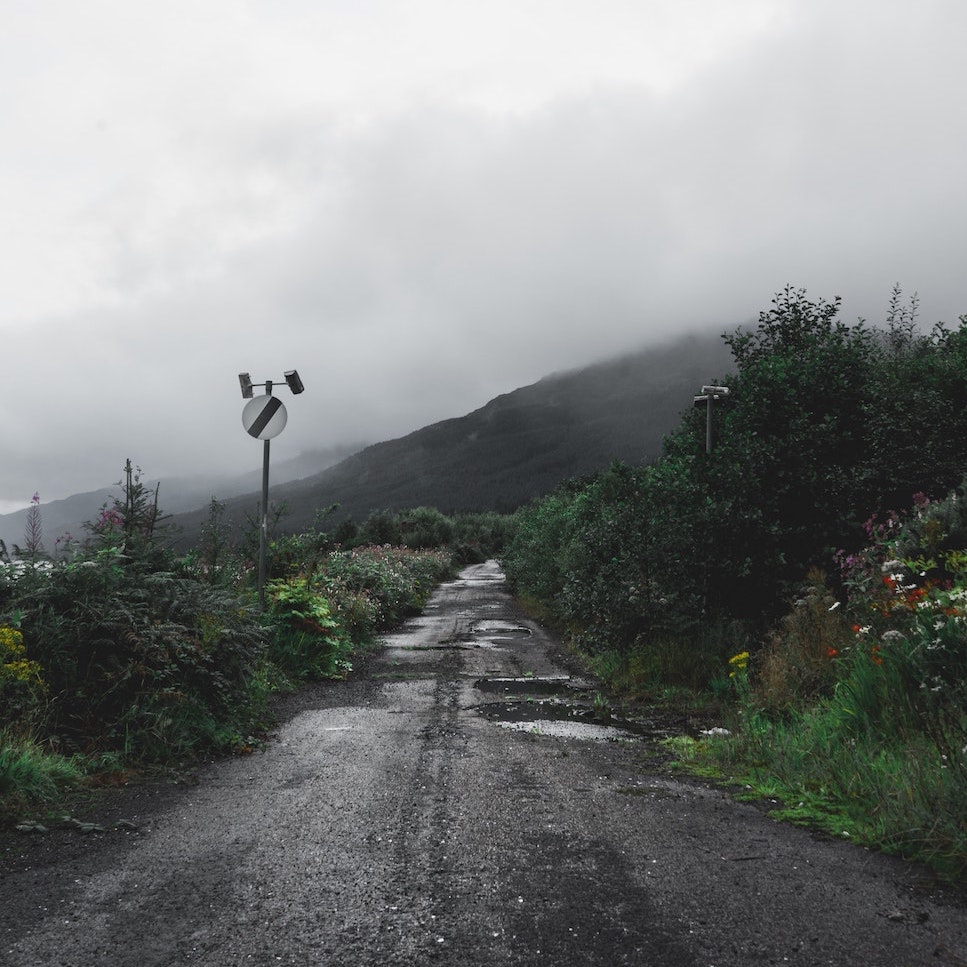
Cold-lay tarmac: minimum temperatures
Most cold-lay tarmacs can be used at any temperature as they do not include any materials that freeze. This includes Ultracrete’s 6mm and 10mm-grade options for cold-lay asphalt mix in the form of the product Instant Road Repair.
Dave advises, “There is no minimum temperature to apply our range of cold lay tarmac products as there is nothing in the material that freezes.
“All of Instarmac’s range of cold lays can be used during cold temperatures,” he adds. “However, Ultracrete’s Tough Patch has an increased workability and is permanent for both reactive and planned maintenance work.”
Read on to find out more about the benefits of Tough Patch and other pothole repair materials, plus how to remedy the situation if a cold-lay mixture has hardened during a cold spell.
For permanent reinstatements, we also advise using a strong, cold joint spray to keep the filler in place, together with applying an overbanding tape to reduce water ingress.
The benefits of hot-lay tarmac
A hot-lay macadam or asphalt can also be used in most types of weather.
One great example from the team at Ultracrete is Enviro Mastic, a rubber modified mastic asphalt that is applied as hot macadam.
As a ready-mixed formula, Enviro Mastic can be poured straight from the bag into a preheated mastic mixer onsite. Along with long-term wear resistance and easy prep work at remote sites, this high-quality mix is SROH compliant (that’s Specification for the Reinstatement of Openings in Highways, for non-industry buffs) and doesn’t require mechanical compaction.
When it comes to using hot-lay tarmac in cold weather, Dave shares, “Again there is no minimum temperature for applying Enviro Mastic, which is the same for all hot-lay mixtures. Just keep in mind that ideally the ground should be frost-free.
“Enviro Mastic has a setting time of 45 minutes to one hour. During colder temperatures, this timescale will greatly increase. Basically, the colder it is, the longer the setting time. Although it should still be set within one hour.”
Another big benefit of using an off-the-shelf hot-lay tarmac is that you’ll quickly cut your wastage. Mixing your own molten mastic often means having heaps of wasted formula leftover that needs to be disposed of. With a ready-mixed bag, you only need to heat-up what you need.
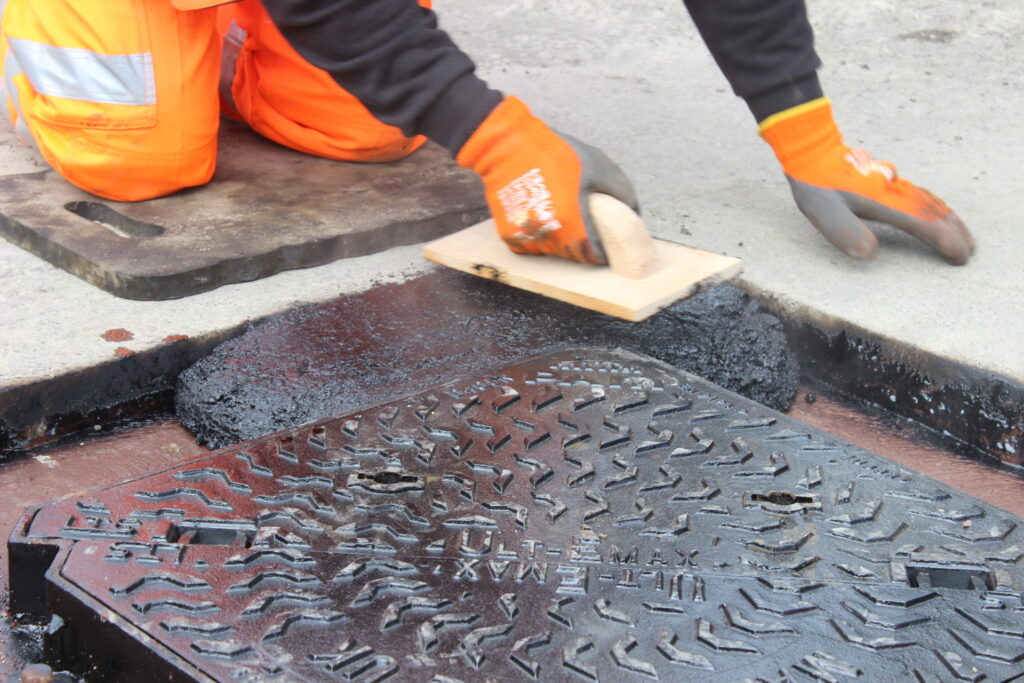
DIY filler vs premixed materials
While you can make your own pothole filler yourself, a premixed formula is much easier to handle and apply.
Consistency is the name of the game when it comes to patching potholes. And this can be hard to achieve when you’re creating your own mix.
Cold-lay tarmacs, such as Instant Road Repair (available with 6mm and 10mm grade aggregate) and Permanent Pothole Repair, are ready to pour. Each bag or tub of cold mix is manufactured to provide the right ratio of formula for each and every job.
Dave explains, “Consistency is key. Each bag of our cold-lay materials are proven and tested to the rigorous standards of HAPAS.”
Widely known in the resurfacing industry, HAPAS stands for the Highways Authority Product Approval Scheme. Products that hold the ‘HAPAS Approved’ accolade have gone through strict independent testing. For some products, such as Ultracrete’s Envirobed bedding mortar, the mortar itself only received approval after it had justified its durability following five whole years in the ground.
“Each and every bag is manufactured to the same high standards so you can be sure you have a reliable product for permanent reinstatements,” shares Dave.
Cold-lay tarmacs, such as Tough Patch, Permanent Pothole Repair (PPR) and Instant Road Repair (IRR), are made on what the manufacturer Ultracrete calls a “just in time basis” to ensure they contain the freshest material. They’ve been used across the globe in varying temperatures.
“Also, both the Ultracrete Tough Patch and Instant Road Repair come in 25kg foil bags. This helps to protect the material from the elements and keeps them fresher with a sustained workability.”
What if my cold-lay tarmac has hardened?
If you are handling a bag or tub of cold-lay asphalt during the colder months you may find the material feels firm to touch and difficult to pour.
Have no fear – the cold-lay asphalt shouldn’t have cured. And certainly not if it is within the use by date (note: all of Ultracrete’s mixes have at least a six-month shelf life).
Slightly hardened cold-lay asphalt can be remedied very easily. You just need to soften the binder.
Dave explains, “As with all cold lay materials, they do have a tendency to firm-up in colder temperatures.
“This firming of the mixture can be very easily remedied by applying slight pressure to the side of the bag. By manipulating and moving the mixture, you are able to easily free-up the binder in the bags and tubs so it can be applied instantly.”
Gently add pressure using your knee to the side of the bag, gentle rolling it across to soften the mixture. By adding this pressure you can manipulate the material so it returns to its normal consistency.
General tips for cold weather pothole repairs
There are few general tips to keep in mind when planning pothole repairs during winter.
Recommended storage for surfacing materials
When storing unopened premixed tarmac during winter months, make sure the bags or tubs are in a cool and well-ventilated unit, ideally on a pallet or shelving and away from drafts and frost.
Both bags and tubs of ready-mixed asphalt from Ultracrete are freshly made. Although they do need to be used within six months. See the manufacturer’s instructions or use-by-date to check.
Plan your operations for later in the day
As a rule of thumb, never fix potholes if the ground is frozen or covered in frost.
We know early mornings are best to get these kinds of jobs done. But consider waiting until mid-morning when the ground should have heated up enough for work to begin.
Ground temperatures are generally lower than air temperatures. Always ensure the ground is completely frost-free before starting work.
Allow extra time for curing
Be aware of curing times when patching potholes.
The good news is that cold-lay mixes from Ultracrete, such as IRR and PPR, do cure instantly. So you shouldn’t notice much difference during colder weather.
If you’re using a hot-lay mix, such as Enviro Mastic, it will take around 1 hour to completely cure during cold weather. We estimate roughly 45 minutes on a hot, sunny day.
Use jointing spray and overbanding tape
Whatever the weather, strong tack spray (cold joint spray) and overbanding tape are always recommended during the process of patching potholes to make your reinstatements permanent.
SCJ Cold Joint Spray is a sealant applied to the vertical edges and base of the pothole. As a 750ml aerosol can, it can be used in all weathers and helps to improve the bond between the hole and newly filled asphalt.
Another recommendation is finishing the repair with Instaband Eco overbanding tape as an extra barrier against water ingress. Apply this thermoplastic tape to the edges of the repair, seal with a blowtorch and leave for 10 minutes before the area can be open to traffic.
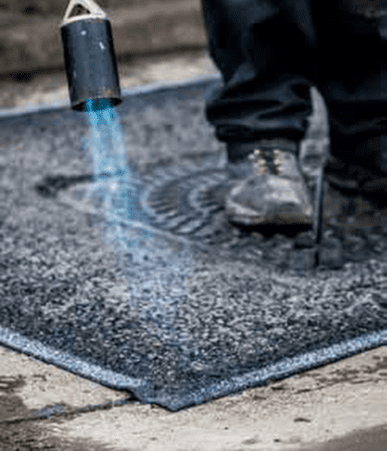
Can you repair potholes in the rain?
Potholes can certainly be repaired in the rain. However you must use a formula that contains enough anti-wash agent to prevent the binder from washing out.
Permanent Pothole Repair Wet contains the right amounts of anti-wash agent to use in the rain.
Tough Patch, the material we mentioned earlier with extra workability, has also been formulated with a special binder so it is equally as effective during wet conditions.
Choose the best products for winter weather
With the right ratio mix, potholes can be fixed during all types of weather. But you first need to ensure that the ground is free of frost.
Take a look at the popular go-to products with hardscapers everywhere that help to get those repair jobs done in no time.
Tough Patch – increased workability
A robust formula that can be used for surfacing during cold weather, including wet weather. The Tough Patch mix is activated by sprinkling water over each layer before compaction. Just ensure the ground is frost-free and the hose pipe is also free from ice.
PPR Wet – ideal for wet weather
Another ideal mix for wet weather. Like Tough Patch, Permanent Pothole Repair Wet includes a greater amount of anti-wash agent allowing it to be used for patching during wet conditions.
Enviro Mastic Hot Formula
This hot-lay filler leaves no room for wastage, can be applied at remote sites and offers the same long-lasting quality as the rest of the Ultracrete range. Pour into a mastic mixer to heat, then apply.
Best prices for premixed tarmac
We have a wide range of ready-mixed asphalt for repairing potholes, available in all grades and including cold-lay tarmac and hot mastic asphalt. At The Paving Experts, we offer some of the best deals for pallet and part-pallet buys.
Pothole repair ancillary items, such as line-marker paint, Perma-soil backfill, cold jointing spray and overbanding tape to securely seal reinstatements, are all available too.
Hardscape tools and equipment are available to buy, including Hyundai petrol-powered wacker plates (from 87cc to 196cc) and top-quality diamond blades for cutting neat, vertical lines for reinstatements with a circular saw.
If you’re still unsure about which materials to use when fixing potholes during cold weather or would like some advice about your reinstatement job, get in touch with our family-run team to ask your burning question. We’re available weekdays on 0330 122 1025 between 8.30am and 5.30pm.

